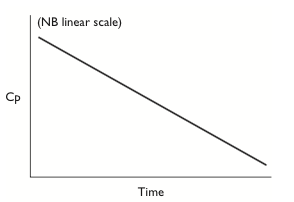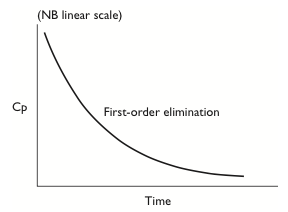To find part one please click here .. :biggrin:
We mentioned in the previous part two steps of Pharmacokinetics ( Absorption and Distribution ) in this part we will continue the two steps of pharmacokinetics ( Metabolism & Excretion ).
3. Biotransformation (Metabolism) :
The step where the drug structure changed thus its properties also changed. The most influenced organ for metabolism is the liver , also some drugs may have first pass metabolism in liver like nitroglycerin.
Drugs that have a high rate of metabolism have a low degree of bioavailability , the route of administration of those drugs plays an important role for example we can’t give nitroglycerin PO , as about 90% of its dose will be eliminated by first pass metabolism leaving the body with no effect !
Another example morphine dose when given as tablet is higher than morphine when given as injection , this is due to first pass metabolism effect.
Phases of metabolism : Phase I and Phase II
Phase I aims to convert the lipid soluble drugs to more water soluble , then Phase II aims to conjugate the drug with another compound to form water soluble complex.
The phase I reactions occur in the cytochrome P450 system , phase II reactions occur in the cytosol. In conjugation reaction many substrates form a complex with the drug like : Glucuronate ( the most important one ), Acetic acid , Glutathione & sulfate.
Factors affecting drug biotransformation :
- Age and Gender.
- Disease : specially in liver may affect drug metabolism , for liver diseased patients dose adjustment needed.
- Induction of Cytochrome P450 system : increase the rate of metabolism.
- Inhibition of Cytochrome P450 system : enzyme inhibitors or competition between two drugs for example may lead to decrease the rate of biotransformation.
- Genetic difference : Groups or even individuals are different for example rapid and slow acetylators; the slow acetylators can’t rapidly inactivate the drug therefor dose adjustment needed.
Drugs will be biotransformed by a predictable rates described by two principles :
1. Zero Order Kinetics :
Rare , described as constant amount of drug eliminated by time regardless the drug concentration (linear ) ex: Ethanol, phenytoin & aspirin. 
Cp : Plasma Concentration.
2. First Order Kinetics :
More common , the decline in plasma concentration varies depending on the concentration , thus the higher concentration , the higher biotransformation rate. The concentration declines ex- ponentially with time. 
4. Excretion :
Describe the process by which the drug or biotransformed drug is eliminated from the body. The major routes of excretion are :
- Renal ; the most common route of excretion for hydrophilic compounds , the pH controls the excretion rare in which acidic urine enhance excretion of weak bases while alkaline urine enhance the excretion of weak acids.
- Fecal.
- Skin.
- Respiration ( exhaled air ).
- Breast milk.
Drug Clearance :
drug clearance defined as the rate of which drug is eliminated from your body, it means the volume of blood cleared from drug per unit time L/h ; for every drug in any organ has a clearance like renal clearance , hepatic clearance .. etc
Total clearance is the summation of every organ clearance.
Total body clearance ( CL )= CL (hepatic) + CL (renal) + CL(x)
The rate of drug elimination is directly proportional with plasma concentration Cp , Thus :
rate of elimination ∝ Cp
So the rate of elimination = constant * Cp
This constant in the previous equation is the clreance (CL)
Clearance doesn’t apply for drugs follow zero order kinetics but apply for those follow first order kinetics.
Summary :
- Pharmacokinetics is the study of what the body do to the drug.
- The route of administration affects how rapidly the drug reaches the blood stream.
- Small molecules pass easily within the cell membranes while large or charged ones can’t.
- At distribution equilibrium the same drug concentration present in all body compartments.
- Lipid soluble drugs penetrates body tissues and BBB , thus they have a greater access to central nervous system than water soluble drugs or hydrophilic drugs.
- Metabolism ( Biotransformation ) occurs mainly in liver , thus lipid soluble drugs processed in liver to be more water soluble to be excreted while water soluble drugs eliminated without further processing in liver.
- There are many routes of excretion , the most common one is the renal route in kidneys.
- Drugs with high first pass metabolism don’t administered orally, because they will have low bioavailability , so they administered by other routes.
- Cytochrome P450 system induction or inhibition affects the drug elimination.
- pH of urine influences the excretion rate of weak acids or weak bases.
- The 4 steps of pharmacokinetics occur simultaneously in the body not respectively.
To be continued ….
